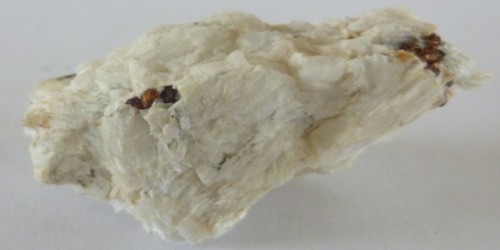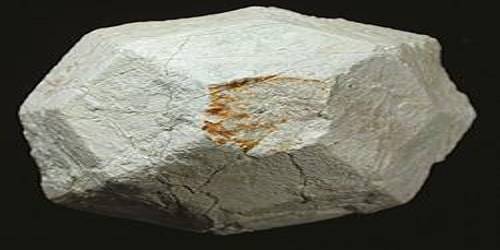Ferronigerite-2N1S is an iron, tin, alumino-hydroxide mineral that naturally occurs around sillimanite-quartz veins. It is very rarely found in gem-quality, cut-able material. Related to, and similar to, Taaffeite, it contains tin instead beryllium. Ferronigerite-2N1S belongs to the nigerite group, högbomite supergroup. The 2N1S ending stands for the nolanite and spinel structural layers.
Ferronigerite-2N1S was first discovered in the Kabba province of central Nigeria in 1944; it was originally named Nigerite. Its name was later changed to nigerite-6H then to nigerite-6T and in 2003 ferronigertie-2N1S was approved by the International Mineralogical Association.
General Information
- Category: Oxide minerals
- Formula: (Zn,Mg,Fe2+)(Sn,Zn)2(Al,Fe3+)12O22(OH)2
- Crystal system: Trigonal
- Crystal class: Hexagonal scalenohedral

Fig: Ferronigerite-2N1S
Properties
Ferronigerite-2N1S possesses no prominent cleavage but does possess a weak basal cleavage. It has a light grey to white streak and often is shiny dark brown in color. The variance of color is due to the individual components of the mineral and where it is found geologically. It has a relative hardness of 8-9 on the Mohs relative hardness scale.
- Color: Colorless, Amber yellow, Golden Brown, Brown, Red.
- Density: 4.51
- Diaphaneity: Opaque
- Fracture: Brittle – Generally displayed by glasses and most non-metallic minerals.
- Hardness: 8.5 – Chrysoberyl
- Luminescence: Non-fluorescent.
- Luster: Vitreous – Greasy
- Magnetism: Weakly magnetic
- Streak: grayish white
Occurrence
Ferronigerite-2N1S has been found to be associated with Precambrian schists, gneisses, and granites, in the Tsomtsaub tin mine in the Egbe District, Kabba Provence in central Nigeria. It is generally associated with microcline-quartz-pegmatites in small amounts and limited in association only to that of old granite, shists, and gnesses. It is also associated with microcline-quartz-mica-pegmities, which make up for the bulk of economically advantageous deposits of cassiterite where Ferronigerite-2N1S is found in association.
Information Source:
















